|
|
| home | features | exhibitions | interviews | profiles | webprojects | archive |
|
Steve Patterson on Cecil Williamson, Gerald Gardner, Wicca and the Museum of Witchcraft and Magic Steve Patterson is a folklorist, and author of 'Cecil Williamson's Book of Witchcraft'.
useum of Witchcraft and Magic in Boscastle(pictured right as it was in the 60's) the most important museum of its kind anywhere in the world? If so why? The Museum of Witchcraft and Magic in Boscastle is indeed the most important of its kind, simply because it is the only one of its kind! There are other museums covering a similar subject matter (there are museums in Germany, France and Iceland for example) but none are as extensive, and none has its pedigree.Even though folk magic and magical belief in general have been a core part of our culture and history since the dawn of time, it still remains, as a subject, ridiculously underrepresented in museums around the world. In my experience the most hard-nosed academics tend to shy away from it as a subject, even in this modern age. At a recent conference of the Folklore Society I heard folk magic being referred to as “dangerous”, “nonsense” and those who had any contact with it were not to be trusted. Hence to this day, on the whole, you will find it mislabelled, tucked away, in storage and conspicuous by its absence in many museum collections. It was these attitudes that in part lead to the founding of the Museum.
What are the objects, exhibits or collections that are most important to the museum, and how did it come by them? The museum was founded by Cecil Hugh Williamson. He was born in Devon in 1909 and had a number of encounters during his childhood with witchcraft and magic. This gave him a lifelong interest in folk magic which lead to the creation of the museum. He had a colourful career; initially he wanted to join the clergy, but then worked on an African tobacco plantation. He went on to work in the early British film industry and for the British secret services. It was in the latter that he first formulated the “witchcraft research centre” as a cover for information-gathering in Germany before the war. This in turn evolved into the museum we see today. He described the Museum as his “spider's web” from which he gathered not only information and artefacts concerning the ways of the wayside witches, but also the money to be able to continue his researches.
One example of an object acquired in this way is the “Wondrous Candle” (left). This is an eerie looking object that was said to aid in the search for treasure. The artefacts are far too many and varied to mention, and my personal favourites change on a regular basis. The best thing to do is to go and see them for you for yourself!
Williamson died in 1999. How did that affect the museum? The collection by no means ground to a halt with his passing. The museum was taken over in 1996 by Graham King, and in 2013 by Simon Costin, during which time the collection has continued to grow and develop, and the museum is very much alive and kicking today. The museum was let off relatively lightly in the great flood that devastated Boscastle valley in 2004. There were some losses and flood damage to artefacts (one of the wooden carved signs was even washed up on the coast of Wales) and damage to the building, but all was up and running by the next season. Cecil Williamson ran the museum very much as a one-man band. Its subsequent owners however have been much more inclusive. Graham King developed the library as a learning resource and Simon Costin has developed its scope though networking, outreach, workshops etc. Consequently it has developed into not only a professionally curated museum collection, but also a tourist attraction, a research resource for academics and as a focal point for many modern day witches and practitioners in the magical arts. Thankfully, even though they may look at each other askance occasionally, these groups on the whole seem to coexist quite happily together.
There is a special association of the museum with Wicca and Gerald Gardner. Can you describe Wicca and help explain this connection? The story of Wicca and the museum's relationship with Wicca is a tangled skein. Wicca is a religion founded by Gerald Gardner. He claimed it was a modern incarnation of an ancient witch cult into which he was initiated in the New Forest in the 1950's. It has become a hugely popular religion worldwide; the only religion Professor Ronald Hutton claims that Britain has exported to the rest of the world. It centres on a god and a goddess which Wiccans consider to be pre-Christian pagan deities, and consequently it draws heavily on pre-Christian mythology as the source of its idea of the sacred. Wiccans organise both their theology and their practice around a cycle of annual calendar customs connected to the solstices and the equinoxes which they call the “Wheel of the Year”. Many consider this to be an embodiment of their mysteries. Originally their practice was based on a sexually-charged occult ritual, but now they tend towards ceremonial devotional practices and healing practices popularised by the New Age movement. Entrance into Wicca is by initiation, and some work in covens but most nowadays work on their own, though tend to favour more modern social media as their preferred form of gathering. Wiccans consider themselves to be a direct descendant of the witches.
W illiamson first met Gardner in London shortly after the war (1950). Gardner had just returned from overseas and had an interest in classical paganism, tribal practices, folklore, occult, swords, flagellation and naturism (nudism). He saw witchcraft as a way of synthesising these into a system of practice. Williamson, too, had an interest in witchcraft; his interest however came from his studies of folk magic and field-work with traditional witches.In 1951 Williamson went over to the Isle of Man and opened his Museum of Witchcraft, but no sooner had it got running, when who should turn up on his doorstep but Gerald Gardner (pictured above on the Isle of Man). He had nowhere to go and seemed to be in some kind of trouble, so Williamson took him in. He was a charming fellow, so Williamson installed him in the museum café as the “resident witch” to entertain the visitors. Gardner eventually bought a house on the island and became more seriously involved in the museum and develop his ideas of Wicca. But the relationship between the two men began to sour and there was an acrimonious parting of the ways. Gardner bought the building, and the Isle of Man museum continued into the 1970's. Williamson however took the contents and set up a string of museums, until one eventually landed in Boscastle in 1960 …and there it stayed to this very day.
Why did the relationship sour? The two men had a radically different vision of witchcraft. G ardner on the one hand saw it as a ceremonial-based pagan religion for the masses, whereas Williamson saw it as a path for only the few. Williamson also saw it as an operative magical system intrinsically connected to the “spirit world”, that had nothing to do with any idea of paganism or what he saw to be the ostentatious rituals of Wicca. Most of all, Williamson felt that Gardner was disdainful of both magic and the old-time witches, neither of which Gardner would have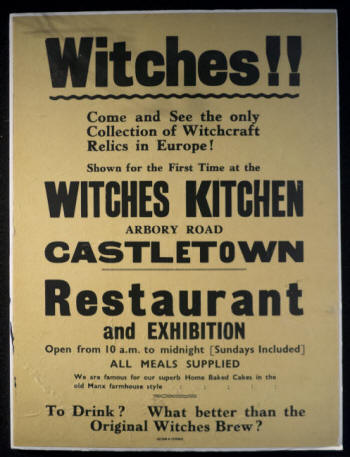 anything to do with. anything to do with.
But, as history reveals, Gardner ‘got the gig’ and Williamson largely disappeared in to obscurity. The reason for this in my mind is quite evident; both men got what they wanted. Gardner got his populist religion and Williamson retired with his underground, chthonic, otherworldly wayside witchery. In his writings however Williamson barely disguises his frustration at the flowering of this ‘new-fangled’ Wicca, which he saw as bearing no relation to the witchcraft he had encountered amongst the folk practitioners, and the wayside witches. Cecil Williamson consequently was quite dismissive of Wicca in his museum. Over the years this has changed though. In the 1990's Graham King incorporated many Wiccan and Neo-pagan elements into the museum (along with many other contemporary magical practices) in order to be more representative of modern magical beliefs. Simon Costin has continued this and has developed folklore as a theme as a key element in the story.
Curating and showing the collection in a way that gets the balance right must be difficult... Yes. As I suggested earlier, Wicca has indeed gained enormous popularity and as even Cecil Williamson conceded, it has bought “joy, happiness, peace of mind and self-understanding to many people”. However, in terms of the study of magical traditions, one of the more problematic aspects of Wicca is that it has become the defining paradigm of witchcraft. It has become the lens through which we see it, and the standard by which we judge it. In short its assumptions have become fact. Many aspects of traditional folk magic have been rejected and sidelined purely because they do not fit in with the Wiccan hegemony. The Museum of Witchcraft has long been victim of this. But it was this that initially attracted me to it. It seemed to be portraying a vision of magical practice that bore no relation to any of the prevailing models of magic such as that of Wicca, Thelema or The Golden Dawn. It portrayed a world of magic born of moors and the wild sea, where the shadowy figure of the wayside witch brooded twixt this world and the shadowy spirit world. The strange thing was that no one else seemed to know anything of this magic that Williamson claimed was the bread and butter of the ordinary working people of Britain. It was from this that my book was born.
When Graham King took over the museum, I was part of a party of volunteers helping to catalogue the contents of the place. I came across a hand -written notebook in Cecil Williamson's own handwriting which appeared to be some kind of collection of spells and folk magic.Williamson never published a book, all we have is a handful of articles and some scraps of writing from the museum. This appeared to be the closest thing to a complete work we could find. The years rolled on and one day this same manuscript was found by Jane Cox and Gemma Gary of Troy books and they asked if I would be interested in writing a commentary for it. As I began I realised that so little was known of the man and the magic to which he referred that more research was needed. The project grew into an exploration of the folk magic of the wayside witch. And I hope it has opened our minds to a stream of magical practice that was once so prevalent, but has in recent times been rejected by “covens and congregations alike”! Williamson was a magician and an animist who had a deep distrust of the excesses of both ceremonial magicians and Wiccans alike. He was an autodidact, a showman and a collector of oral traditions who had a mutually ‘arms-length’ relationship with the folklorists and the academics. Many have found his material and his collection methods unfathomable and have written him off as unreliable …or even a downright fraud! But let us not forget, he spent the best part of the twentieth century conducting field work in to the world of the wayside witch.
What with this and his involvement in the early film industry (the film industry in Germany in the early 20th century was particularly experimental, with a vibrant “Expressionist” movement producing films like “The Cabinet of Dr Caligari”), it would not be such a wild assumption to make that he had an interest in the experimental arts. A museum is about appearance, and his background in MI6, the film industry and the world of magic would have fed in to this. Maybe he was not just a practitioner of the magical arts, but also of what we would now call post-modern performance arts.
http://artcornwall.org/features/MWM_Boscastle.htm http://artcornwall.org/simon_costin.htm http://www.troybooks.co.uk/cecil-williamson-book-of-witchcraft.html
|
|
|

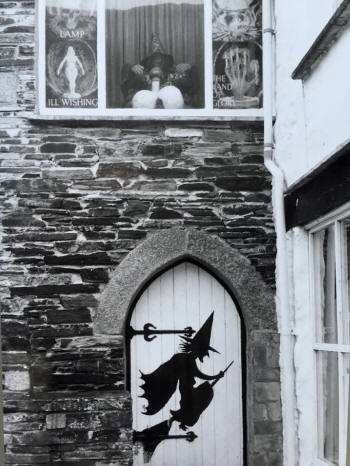
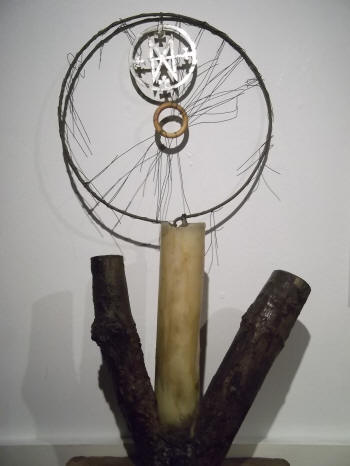
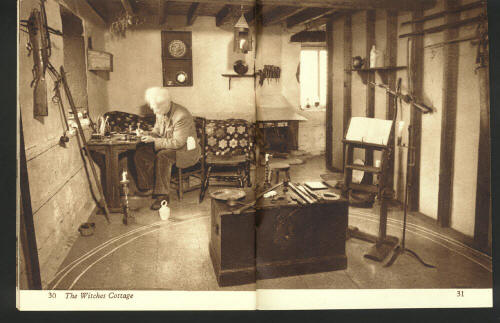
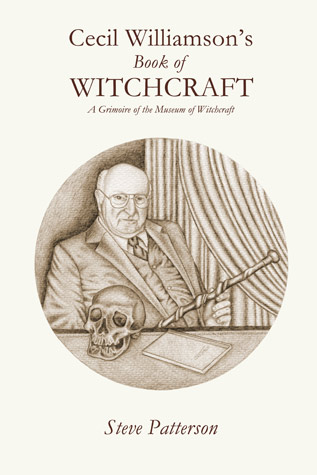
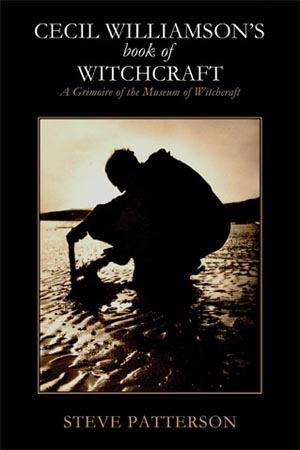 Cecil
Williamson never set out to be a conventional researcher or curator, so
to judge him by this yardstick would be to do him an injustice. To begin
to understand his work and methods
Cecil
Williamson never set out to be a conventional researcher or curator, so
to judge him by this yardstick would be to do him an injustice. To begin
to understand his work and methods